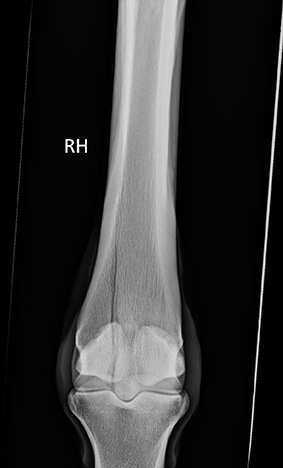Study identifies genetic component in Thoroughbred fracture risk
- February 21, 2024
- ⎯ Edited Press Release
According to a recent release, new research from the University of London, England’s Royal Veterinary College (RVC) into genetic risks of fracture in Thoroughbreds has found that horses with lower levels of collagen type III have a higher risk of fracture.
Previously, there has been limited research into this disease with no specific genetic mechanisms identified. However, these new findings have enabled the RVC to develop systems to identify genetically high-risk horses. This will provide a greater understanding of how best to identify, diagnose and manage horses at high risk of fractures and contribute to greater health and welfare of Thoroughbreds.
Fracture: a complex condition
Bone fractures are common in Thoroughbred racehorses due to the forces the bones can experience and are sadly a leading cause of euthanasia. However, fracture is a complex condition, with both environmental and genetic risk factors affecting a horse’s susceptibility.

Debbie Guest, BSc, PhD and research fellow at the RVC, led the team that developed a polygenic risk score, which provides a measure of disease risk due to a variety of genes. They then used this to determine the distribution of scores across the general UK Thoroughbred population.
The team members were then able to utilize this information to select cells from horses whose risk placed them at the extreme ends of the population with either very low or very high risk. These cells were then used in laboratory studies to establish a cell model and investigate the genetic factors involved in fracture risk.
The collagen III factor
The research found that collagen type III, a gene which is required for normal bone formation, is expressed at lower levels in bone cells from horses with a high genetic risk of fracture. This is because they have a change in their DNA sequence in the region which controls how much collagen III is produced.
Additional research is now being conducted to validate the risk-scoring system in another cohort of horses. Further studies using this system and cell model will help to identify other genes and processes to better understand why some horses are inherently more susceptible to fracture than others.
Developing new interventions
As Guest noted: “Bone fractures are a major welfare concern in Thoroughbred racing. We know that there are many environmental risk factors for fracture, and much has been done over the years to reduce these risks. Despite this effort, fractures sadly still occur, and we know that some horses are genetically more predisposed to fracture than others.
“The development of a polygenic risk score for fracture will allow us to identify horses that are at high genetic risk to allow the targeted use of diagnostic imaging and close monitoring of their bone health. This study has also demonstrated the power of using cell models to work out what differences exist in bone cells from high and low-risk horses and therefore why some horses are at high risk. This is vital to develop new interventions for high-risk horses in the future so that they are less likely to suffer from a catastrophic fracture.”
The research was funded by the Horserace Betting Levy Board, the Anne Duchess of Westminster Charitable Trust and The Alborada Trust. The article is available to read here: https://www.mdpi.com/2076-2615/14/1/116
About the RVC
The Royal Veterinary College (RVC) is the UK’s largest and longest established independent veterinary school and is a Member Institution of the University of London. It is one of the few veterinary schools in the world that hold accreditations from the RCVS in the UK (with reciprocal recognition from the AVBC for Australasia, the VCI for Ireland and the SAVC for South Africa), the EAEVE in the EU, and the AVMA in the USA and Canada. The RVC is also a research-led institution, with 88% of its research rated as internationally excellent or world class in the Research Excellence Framework 2021.








